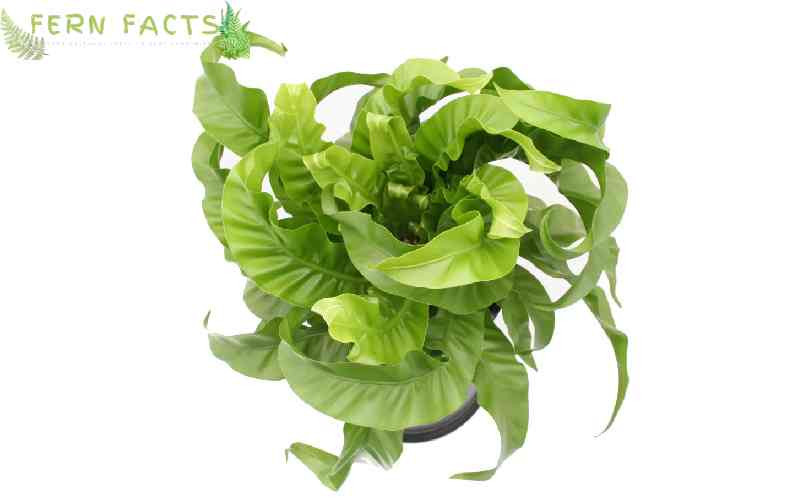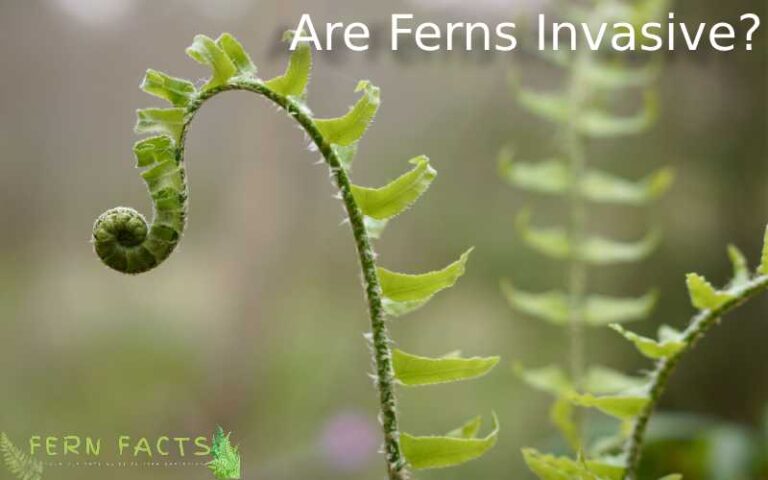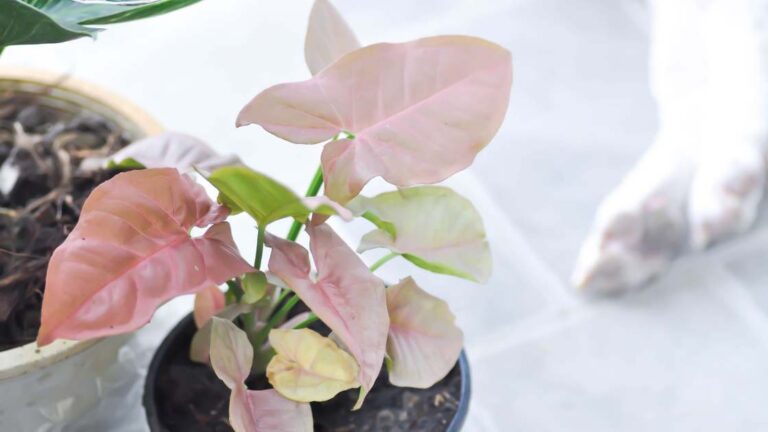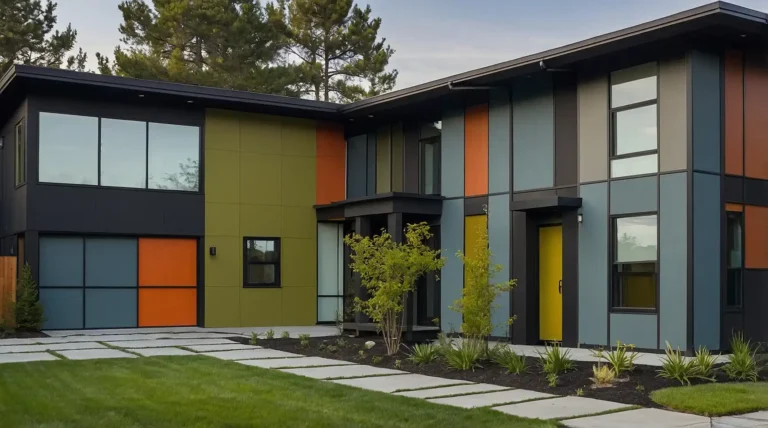Hurricane Fern: How to Grow and Care
Hurricane ferns are twisted bird nest ferns that have glossy dark green to light green color over their growing phase.
If you want to grow and thrive these ferns at your house then this article will definitely guide you from head to toe.
In this article, we will give the overall idea and characteristics of Hurricane ferns so that you can comprehend these ferns.
Later on, we will provide you with some basic guidelines and caring tips so that you can plant this Hurricane fern in your house and make it thrive. So let’s start with the comprehensive guidelines.
Overview of Hurricane Fern
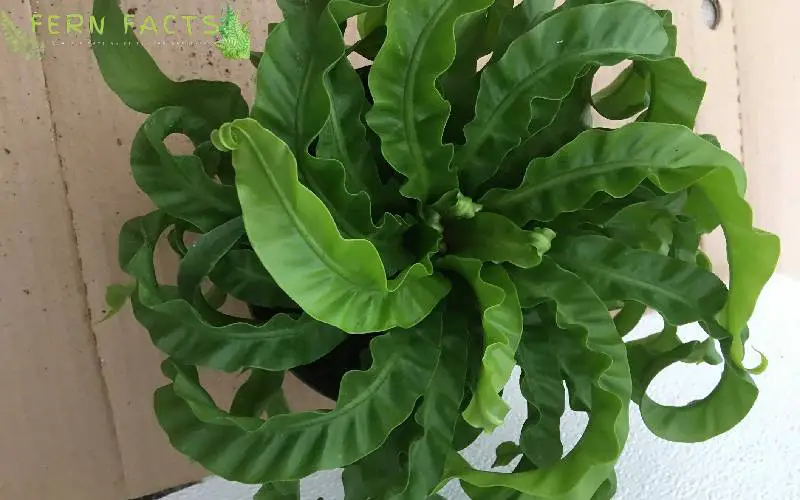
- Botanical names: Asplenium antiquum ‘hurricane’
- Common name: Hurricane Ferns
- Plant: Perennial evergreen
- Native range: Asia
- Native habitats: cliffs, tree trunks, Dalrymple forest
- Height: 18 to 24 inches
- Flower: no flowers
- Soil pH: 5.0- 5.5
- Soil type: Acidic, well-drained
- Hardiness: 11, 12
- Toxicity: non-toxic
Hurricane ferns are perennial evergreen ferns which is a new variety of bird’s nest ferns. They have glossy green leaves which swirl like hurricane patterns.
Their green leaves can turn from deep green to light green shade during their different growing phases. These ferns are usually native to Asian countries like China, Japan, and Korea.
Similarly to maximum fern varieties, they also prefer humid and warm conditions to grow. They also have several benefits as they have the ability to purify the air and can also remove toxins.
That’s why this fern is one of the popular choices for bathrooms and kitchens to keep. These Hurricane ferns are also nontoxic plants, especially for cats and dogs.
So, being a pet owner, you can easily plant these ferns without any hesitation or any double thought.
Hurricane Fern Care and Maintenance
Now let’s get some basic caring and maintenance tips for getting thriving Hurricane ferns in your house.
Light
Hurricane ferns can thrive in bright indirect sunlight. Although they have the ability and tolerance level to tolerate sunlight, excessive sun rays can scorch their fronds.
Better you give them a partially bright place or in direct sunlight for them to grow. If you notice that their fronds are getting yellow or brown, then it might be one indication that your ferns are not getting ideal light conditions.
That’s why, immediately transfers them to an indirect bright location where they will get dappled shade to thrive.
Water
Watering is another complicated caring aspect to do for these Hurricane ferns. They prefer moist damp environments but not drowning conditions.
They cannot tolerate standing water; it can ruin their roots as well. Prefer you water them once a week. However, during hot weather, you may need to water them frequently according to their soil conditions.
If you see soil is getting dry then you can change the schedule from once to twice a week. But make sure you don’t overwater them as they can’t tolerate drowning conditions.
Try to keep their soil damp and moist. You can also use the “Thump-press” technique where you have to press your thumb on the soil. If the soil is damp you will notice water coming out from it.
Then wait for a couple of days to dry the soil first. But if you press and water is not coming then it’s time for you to water them.
Soil
Hurricane Fern prefers rich organic soil which gives them nourishment to their roots. Therefore, you need to mix them with perlite and peat moss by adding acidic soil with a pH level of 5.0 to 5.5.
However, If the soil is too acidic you need to fix the soil by mixing dolomite lime which will raise the pH and balance the Sulphur level from the soil.
Temperature
Hurricane fern’s best preferred temperature would be between 60 to 80 degrees Fahrenheit along with 11 to 12 Hardiness zones.
If the temperature drops below 60 degrees Fahrenheit, it will damage the ferns and can lead the ferns to die as well. Thus, you need to maintain the temperature level during winter seasons.
It’s better to shift your plants inside the house and try to give them a warm humid atmosphere so that they can survive at that time.
Fertilizer
The best fertilizer would be liquid fertilizer for these Hurricane ferns. It will give them balanced and diluted to half strength from time to time.
Thus, you need to fertilize your plants once a month during spring and summer seasons which are mostly their growing seasons.
Try to not overfeed them because it might harm the plants by burning their fronds.
How to Prune Hurricane Ferns
As a matter of their speeding growth and pattern, these ferns don’t need pruning and trimming. However, you can always control their growth by cutting off the fronds from the outside.
You can also trim the dead and brown fronds in order to keep your ferns fresh green looks.
Common Problems
Here are some common problems of these Hurricane ferns that you can face during their growing life cycle.
Burn of Frond Tips
The most renowned problem of these Hurricane ferns is the frond’s tip burn. Usually, this problem occurs due to over-fertilizing the plants or over-watering.
Hence, you need to balance the watering and fertilizing techniques to give them healthy growth.
Nematodes
Nematodes are tiny little worms that are mostly found in the soil. These tiny worms basically live on the soil and feed the plant’s roots.
These worms can give them a yellowish appearance and ultimately can kill your plants. So if you notice these Nematodes on your plants then you need to take initiative at the first go.
You can use insecticide to drench the soil which can help you get rid of these Nematodes.
- Discover More About Caring for and Growing Marsh Ferns.
Propagation of Hurricane Fern
Hurricane ferns can be propagated by spore-collecting methods since they are patented plants. So you cannot propagate them by dividing or cutting their fronds.
In order to proceed with the spore-collecting method, you have to choose mature plants that have new spores beneath the fronds.
Then, use any white paper to collect the spores from the fronds. You can just tap or flick the fronds with your finger slightly and let spores fall onto your paper gradually.
After that, you need to mix the soil with rich fertilizer and spread the spores all over the soil. You need to make sure the spores don’t get direct sunlight because it can burn the spores.
Once you have seen them germinating, you can transfer them to a selective pot or a container. Over the passing time, just follow the usual caring and maintenance tips to get thriving Hurricane ferns at your house.
Summing up
On a final thought, Hurricane ferns are one type of bird’s nest ferns that are basically popular houseplants for gardeners.
With the right care and maintenance, you can give these ferns a healthy living atmosphere in your house. These hurricane ferns will spread an elegant greenery appearance to your house if they are treated well.
Frequently Asked Questions (FAQ)
- Are Hurricane Ferns rare?
-Yes, they are a rare species as they are patent plants of bird’s nest ferns.
- How big can they grow?
-They can grow up to 2 to 3 feet wide if they get their ideal condition.
- Are Hurricane Ferns toxic to pets?
-Well, no they are not toxic to animals.

